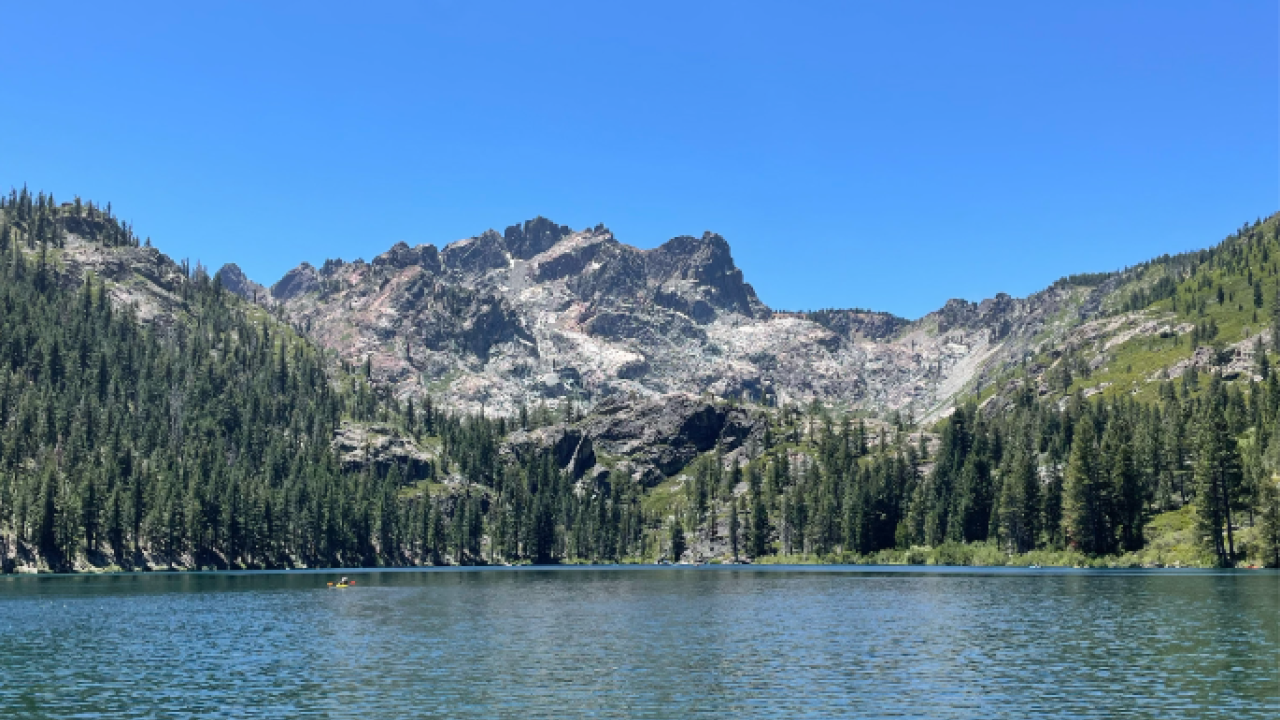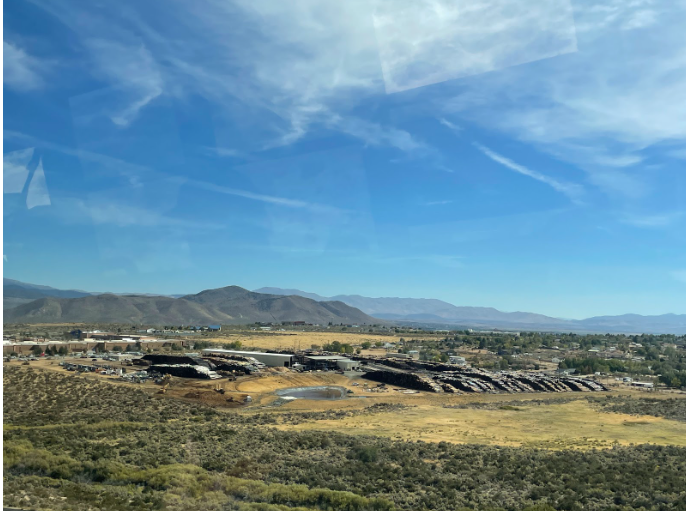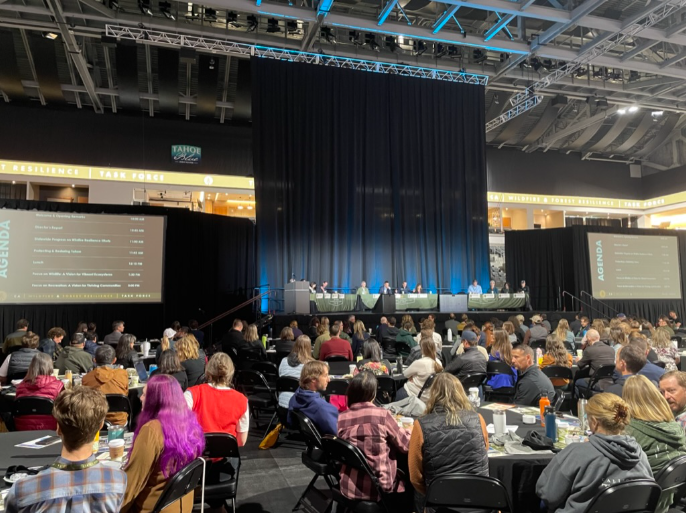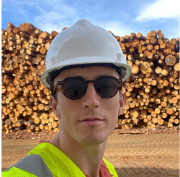
Building a just and resilient forest economy
Lessons from my EPM Practicum
When I began my Environmental Policy & Management (EPM) practicum, I expected to focus on forest management policies and economic modeling. What I didn’t expect was how much this project would reshape my understanding of research, policy, and the interconnected challenges of wildfire resilience, economic justice, and rural development.
Through my Graduate Student Research position with the UC Davis Environmental & Climate Justice Hub and the Sierra Institute for Community & Environment, I explored how wildfire resilience strategies can support climate action and drive sustainable, community-centered economic growth. My research culminated in The New Forest Economy, a report analyzing how prescribed fire, sustainable timber industries, and outdoor recreation can serve as viable economic strategies for California’s North State. But beyond the research itself, I gained practical skills, professional connections, and policy insights that will shape my career.
The following writing contains some takeaways, thoughts, and reflections from my experience.
Research as a non-linear process
One of my first lessons was that research is never a straight path. Initially, I expected my work to be highly structured, data-driven, and mostly quantitative. But as I explored case studies, land management policies, and regional economic plans, I realized that qualitative insights—particularly from Indigenous land stewards, rural community leaders, and environmental justice advocates—were just as crucial as hard data.
This became even clearer through my conference participation, where I engaged directly with policymakers, scientists, and industry leaders shaping wildfire and forest management policies. These conferences provided invaluable insights, deepening my understanding of the intersection between wildfire resilience, economic development, and environmental justice.
Recognizing Indigenous fire stewardship with prescribed fire as the future of forest management
At the Wildfire & Forest Resilience Taskforce Summit in October 2024, discussions focused on the massive backlog of fuels treatments needed to prevent megafires—but also the policy barriers, funding limitations, and bureaucratic delays preventing large-scale implementation. What stood out most was the leadership of Tribal nations, local communities, and scientists, who have long advocated for systematic fuels treatments, with prescribed fire as a core part of forest management.
Prescribed fire is not a new solution—it is one of the oldest and most effective land stewardship practices. Indigenous peoples in California have used cultural burning for millennia to maintain ecosystem health, enhance biodiversity, and prevent extreme wildfires. However, state and federal agencies historically suppressed these practices, prioritizing fire exclusion policies that contributed to today’s wildfire crisis.
This summit was significant because government agencies are finally catching up. Leaders from CalFire, the U.S. Forest Service, and the California Natural Resources Agency acknowledged that Indigenous fire knowledge must be integrated into modern wildfire resilience strategies. Tribal fire programs—such as those led by the Yurok, Karuk, and North Fork Mono Tribes—are already demonstrating how cultural fire can be scaled up to restore forest health while strengthening Indigenous land stewardship.
Still, major barriers remain. Legal liability concerns, lack of long-term funding, and slow permitting processes continue to hinder the widespread use of prescribed fire. The challenge now is ensuring that policy and funding structures support the practitioners leading this work—not just large agencies with political influence. The summit underscored that prescribed fire is here to stay. The question is how quickly state and federal agencies can remove barriers and invest in those already doing the work.
Forest-based industries play a critical role in the North State’s regional economy

Sustainable forest products play a key role in balancing wildfire resilience with rural economic development. When managed responsibly, salvaging timber from burn scars and thinning treatments can create local jobs, reduce hazardous fuels, and provide sustainable building materials. Locally controlled, community-based models ensure that benefits stay within rural and Tribal communities rather than reinforcing corporate-driven economic extraction.
During the Wildfire & Forest Resilience Task Force meeting, I had the opportunity to tour the Tahoe Forest Products mill facility, developed in partnership with the Washoe Tribe. The facility processes timber from burn scars and fuels reduction projects, demonstrating how fire-adapted landscapes and sustainable economies can coexist when industry, land stewards, and local communities collaborate.
At the Sierra Nevada Alliance Conservation Conference, I was surprised to learn how recreation-based economies could complement conservation goals. I had focused primarily on timber and biochar industries as economic pathways, but I came to see that equitable outdoor recreation investments—if well-managed—can create sustainable jobs while reinforcing environmental stewardship.

Finally, at the Wildfire & Forest Resilience Taskforce Meeting in December, it became clear that state and federal agencies are still playing catch-up on wildfire prevention. The urgent need for a vastly expanded workforce, streamlined permitting for prescribed fire, and long-term funding commitments was undeniable. The meeting reinforced that California must act now to scale up prescribed fire programs, remove legal barriers, and invest in land stewards who are already leading the way.
These experiences transformed my research from an academic exercise into a real-world policy discussion, highlighting both the economic opportunities and practical barriers to implementing wildfire resilience strategies.
So what does a just forest economy look like anyway?
At the heart of my research was a question: How can economic development and wildfire resilience work together—without reinforcing the same inequities that got us here? My findings pointed to three major opportunity areas:
Prescribed fire as a permanent management strategy
The lowest-cost wildfire resilience model (Holland et al. 2022) integrates Rx fire—in addition to mechanical thinning and selective fire suppression.
Expanding Tribal-led cultural burning and state-supported Rx fire workforce programs is critical for long-term forest health and Tribal empowerment
Sustainable forest products—best if locally controlled
Tahoe Forest Products offers a promising model for burn-scar timber recovery and community-based milling.
Ownership structures should prioritize local and Tribal ownership.
Recreation as an untapped opportunity for the North State’s rural economy
I hadn’t originally considered recreation-based economies as a key part of forest resilience.
My research showed that equitable outdoor tourism investment—paired with fire-safe infrastructure and responsible housing development—could drive sustainable growth in rural communities.
Bioenergy, Carbon Capture, and Storage (BECCS) is a nascent and unproven industry
Current industry examples do not support BECCS contributing equitable growth to the North State’s economy
With the right guardrails around biomass utilization, with a focus on forest thinning treatment sourced biomass, BECCS could be a central component to sustainable forest management and carbon mitigation
Building practical skills for a career in climate & land use policy
This practicum wasn’t just about research—it was about building real-world skills that will shape my career. Through writing, analysis, and direct engagement with policymakers, I gained experience in:
Geospatial & policy analysis – Evaluating wildfire risk, land-use patterns, and regional economic strategies using GIS and policy review methodologies.
Public speaking & presentation – Presenting findings to Sierra Institute staff, researchers, and policy professionals.
Stakeholder engagement – Attending four major conferences, networking with Tribal land managers, state policymakers, and environmental justice advocates.
Working lands sector-based research – Integrating wildfire science, economic modeling, and environmental justice frameworks to craft policy-relevant solutions.
Gratitude & next steps
None of this would have been possible without the mentorship and guidance I received along the way. I am deeply grateful to:
Deniss Martinez, Beth Rose Middleton, and Alyssa Nelson at the UC Davis Environmental & Climate Justice Hub for their expertise on Indigenous land stewardship and environmental justice frameworks.
Zoe Watson and Jonathan Kusel at the Sierra Institute for Community & Environment for helping me connect research to on-the-ground forest management work.
Jessica Penrose at EPM for providing invaluable feedback on framing my research and refining my analysis.
Looking ahead, I hope to continue building on this work, whether through state-level policy roles, consulting, or community-based climate resilience projects. This practicum has given me a primer on the skills, knowledge, and connections to pursue a career in wildfire resilience, land-use planning centered in environmental justice and community resilience.
As California grapples with the future of its forests and rural economies, I believe that justice-centered forest management must be part of the solution—and I’m excited to be part of that work.

By Sean Treacy, MS Environmental Policy & Management
UC Davis
